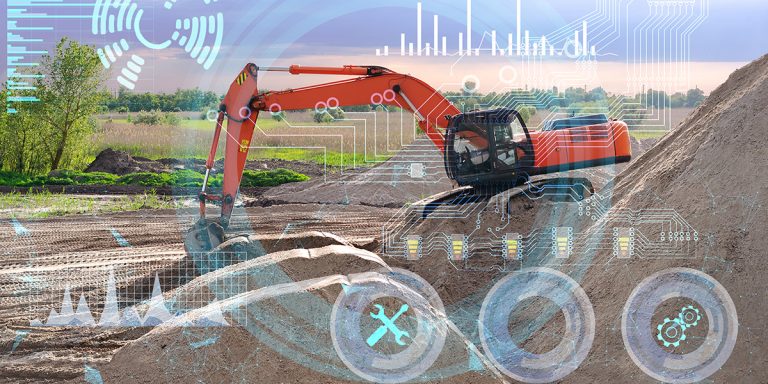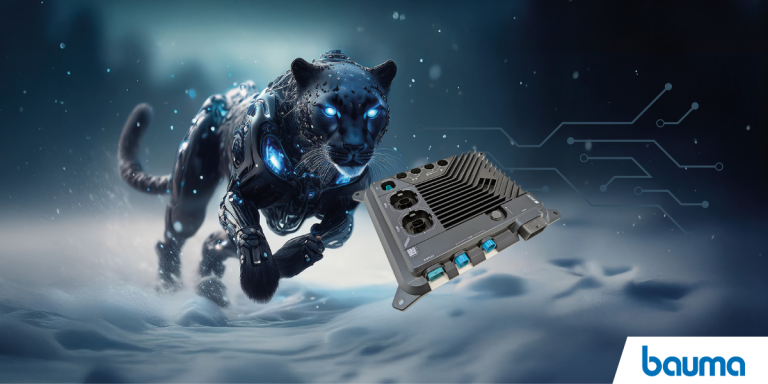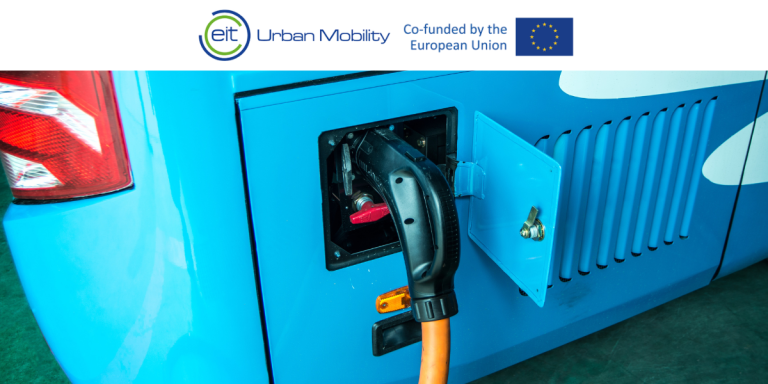All the features that make a vehicle “smart” require on-board controllers or ECUs. Currently, the development of autonomous vehicles has reached phase 3: conditional automation. At this stage, vehicle automation involves reducing user load by interfacing with systems instead of the user. Automation accesses the machine functions via command and control or controllers (ECU).
The change in needs is moving towards:
- A broader range of functions,
- The inclusion of a wider range of technologies, in particular for environmental acquisition,
- “Smart” over-systems emulating humans – using supercomputers,
- Electrification of vehicles.
Fabien TRINITE, Group Director of the ECU Automation Product, in charge of the range of computers for industrial and commercial vehicles and off-road machinery, attests to ACTIA’s expertise in the area of vehicle automation.
WHAT GUIDES MANUFACTURERS IN THEIR SELECTION OF ON-BOARD CONTROLLERS?
An electronic system for industrial machinery never obtains its specific features via the on-board controllers, but instead by the way in which this system guarantees the functionalities of the vehicle and interacts with its environment. The ECU characteristics depend on the type and number of systems to be managed, as well as the data flows to be sent in the system.
For example:
- Vehicle topology,
- Interactions with the dedicated ECUs (engine, ABS, etc.),
- Specific input/output requirements,
- Its dimensions and weight,
- The overall cost of the system.
All these criteria are taken into account by the manufacturer.
Also, the developed computation power will result from a compromise between the consumption and heat dissipation constraints. This data is essential to all on-board electronic systems.
HOW IS ACTIA’s COMMAND AND CONTROL OFFERING POSITIONED?
In addition to the price, certain components of ACTIA’s offer really make it stand out:
- The diversity of the catalogue,
- The ability to guarantee different levels of environmental constraints,
- The ability to customise the offer,
- The guarantee of product durability, long term delivery, safety, and more.
ACTIA has been working with command and control systems for many years, to meet specific customer needs and via its range of generic products. There are two main families of on-board computer. The ActiMUX solution, oriented to buses and coaches, manages the electrical functions, whilst the ACTI-WAY solution, for off-road vehicles, is focused on hydraulic functions.
Our current ActiMUX family offer is composed of the computers Master68/Master25/Power XX. The range is available in a version including its low level (BSP) software. This version makes it possible to compose a customisable system. Whereas a version including the ACTIA Actigraf software can be used to develop a full system.
For off-road machinery, the ACTI-Ways range, composed of Safety Power Units (SPU) controllers, is particularly well suited to harsh environments and functional safety.
Our offer is for different vehicle families with common needs but their own specific features: HGVs, buses and coaches or off-road machinery. Thus, ACTIA is able to diversify its solutions on these different markets. This generates real added value. The Group offers generic solutions that can be adapted to suit customer needs.
WHICH SUPERECU IS ACTIA FOCUSING ON?
Today, ACTIA is enhancing the features of its range of on-board controllers with a new generation: by standardising their characteristics and performance.
Therefore, ACTIA Mux 4th generation MPS is equipped with increased input and output capacities, and better functional safety (ISO 26262).
ACTI-WAYS 2nd generation also improves the computers’ ability to cover the growing needs of the systems that are also becoming increasingly complex for the off-road vehicle market.
Of course, ACTIA is continuing with its development strategy for command and control units with the development of supercomputers intended for autonomous vehicles. The SuperECU completes electro-hydraulic system design. The motors and actuators offer more accurate operation and excellent flexibility. Driving and control are more accurate in driving environments that are sometimes very complex: urban mode for buses and coaches and work site mode for special machinery.
ACTIA is designing its supercomputer as the key to future driverless vehicles, to complement current electronic system design. This ECU:controller will be adapted to suit the specific needs of industrial vehicles whilst guaranteeing synergy with the components available for light vehicles.
For example:
– As a complement to the user, to automate functions such as digging a ditch in a straight line,
– To enable autonomous journeys in a closed environment, in a work site or in fields, for example.
HOW IS ACTIA BENEFITING FROM SYNERGIES IN THE MARKETS IT TARGETS?
The reorganisation of ACTIA into Product Line Centres increases the synergies between the different markets. It enables the Group to pool similar technologies and functionalities: by fostering cross-use.
The aim of this PLC organisation is to prepare the solutions of the future. To do so, ACTIA compares customer and market needs, as well as supplier technical offerings and regulatory and standard-related requirements.
Reliability analysis, which is essential to the product development methods, enables us to select and design the solutions and components. Selection is also made based on vehicle availability and service life needs.
ACTIA’s long-standing experience in electronic system design, telematics and diagnostics enhances our range with on-board or off-board solutions. In particular, these solutions enable remote maintenance, data collection and predictive maintenance of vehicles.
ACTIA is planning ahead for customer demand, to accelerate the implementation of solutions and their roll-out. The different Group entities support customers in the design phases but also throughout the vehicle service life, based on the need to make changes.
WHAT ROLE DOES SOFTWARE PLAY IN ON-BOARD CONTROLLERS?
Over the next few years, software will be a major component of vehicle development costs. On-board software alone will be the main part of a vehicle’s value. Vehicles contain various sensors and detection means. Software must also contain real-time data processing capacities. It includes specific processing units, notably made of multi-core processors.
The system is exponential. More data to be processed means more processing power and more communication in order to acquire, understand and use this data.
Integrity for on-board software, users and people in proximity to a highly automated vehicle is therefore a major challenge, despite this growing complexity.
Designing and developing effective on-board solutions for vehicles is still a real challenge, in particular for the security of IT systems and the safety of actual people.
System safety and security is vital to meet manufacturer needs. The car industry has carefully studied ways to improve software development quality.
For this reason, ACTIA has procured test tools to cover more risks, in line with recognised methods.
HOW CAN ACTIA GUARANTEE INTEGRITY AND FUNCTIONAL SAFETY FOR SYSTEMS THAT ARE SO COMPLEX?
ACTIA is closely connected to its markets, to monitor changes, including changes to standards. The group has successfully developed its technologies and its organisation to plan ahead for these issues.
ACTIA has created a centre dedicated to the areas of cyber security: expertise, monitoring, robustness and penetration testing. This measure aims to improve protection solutions in the specifications and implementations for exposed products. In addition, ACTIA is involved in standardisation committees and is notably a member of ISO SAE 21434.
The trend is the same in the area of functional safety. ACTIA has been designing and manufacturing certified products for 15 years : including the creation of a dedicated activity manager role, the Project Safety Manager.
This manager is in charge of coordinating the methods and solutions.
ACTIA is able to address a broad range of standards (ISO3849, ISO25119 and ISO26262) with high performance level in security, safety and ruggedness for products put on the market.
HOW IS ACTIA’S EXPERTISE IN COMMAND AND CONTROL ENABLING US TO MEET VEHICLE ELECTRIFICATION NEEDS?
Electrification results in the use of various voltage levels on the vehicle. ACTIA leverages on its experience in low-voltage converters to offer solutions for transferring between these different levels. The offer covers very simple step-down converters to equalisers and bidirectional converters.
The battery equaliser is a smart converter. It is a real load distributor, able to provide a reliable 12V regulated power supply for dual-voltage electrical network architectures. It tolerates consumption peaks of up to three times the nominal value and significantly improves battery service life. In addition, the ACTIA equaliser provides CAN monitoring and diagnostics functions.
Therefore, for electric vehicles, it is clear that ACTIA’s ECU expertise benefits the vital systems linked to this type of driving, and protects the battery in particular.






